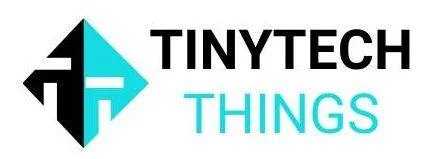ChatGPT Technology is an innovative AI language model that has revolutionized the way we interact with computers. With its advanced natural language processing capabilities, ChatGPT enables more dynamic and human-like conversations between users and machines. By understanding and generating text-based responses, ChatGPT has opened up new possibilities for various industries and applications.
Table of Contents
In the following sections, we will explore the concept, technology, and applications of ChatGPT. We will dive into the underlying technology that powers ChatGPT’s capabilities, and we’ll discuss its potential applications across customer support, content generation, virtual assistants, and more. Furthermore, we will provide insights into how you can implement ChatGPT in your own projects and discuss the future directions of this remarkable AI model.
ChatGPT Technology has not only enhanced efficiency and convenience but also transformed user experiences. Let’s embark on a journey to understand the profound impact of ChatGPT and its potential in shaping the future of human-computer interactions.
Understanding the Technology behind ChatGPT
ChatGPT’s impressive capabilities stem from its advanced natural language processing (NLP) technology, specifically its utilization of the Transformer architecture. Let’s delve into the key aspects that empower ChatGPT Technology to generate human-like responses and engage in meaningful conversations:
Language Modeling
At the core of ChatGPT is a language model that has been trained on a vast amount of text data. Through this training process, the model learns patterns, grammar, and semantics of human language, allowing it to comprehend and generate text-based responses.
Transformer Architecture
The Transformer architecture plays a pivotal role in ChatGPT’s success. It is a deep learning architecture designed to handle sequential data, such as text, with remarkable efficiency. The Transformer model consists of multiple layers of self-attention mechanisms and feed-forward neural networks. This architecture enables ChatGPT to capture long-range dependencies in the input text and generate coherent and contextually relevant responses
Pre-training and Fine-tuning
ChatGPT Technology undergoes a two-step process: pre-training and fine-tuning. During pre-training, the model learns from a massive corpus of publicly available text from the internet. This phase allows the model to gain a broad understanding of language patterns. In the fine-tuning phase, the model is further trained on more specific and curated data to adapt it to perform well on desired tasks or domains.
Contextual Understanding
One of the significant advantages of ChatGPT is its ability to understand context. It analyzes not only the current input but also the preceding conversation context to generate coherent and context-aware responses. This contextual understanding allows for more natural and meaningful interactions.
Continuous Learning and Feedback Loop
OpenAI continually refines ChatGPT by gathering user feedback and iteratively improving its performance. By incorporating real-world usage data and addressing biases and limitations, ChatGPT evolves over time to deliver better results and enhanced user experiences
Through these underlying technologies, ChatGPT empowers developers, businesses, and individuals to create applications and systems that engage users in interactive and human-like conversations, opening up new possibilities in various fields, including customer support, content generation, virtual assistants, and more
Applications of ChatGPT Technology
ChatGPT’s versatility and natural language understanding make it applicable in various domains and industries. Let’s delve into some of the key areas where ChatGPT’s capabilities find utility:
Customer Support and Virtual Assistants
ChatGPT can be employed as a virtual assistant or chatbot to handle customer inquiries, provide support, and offer personalized recommendations. Its ability to understand and respond to user queries in a conversational manner enhances the customer experience and improves overall satisfaction.
Content Generation and Writing Assistance
ChatGPT can assist in content generation by providing ideas, suggestions, and even drafting paragraphs or sections of text. It can be particularly useful for generating blog posts, social media captions, product descriptions, and other written content.
Language Translation and Interpretation
With its language understanding capabilities, ChatGPT can facilitate language translation and interpretation tasks. It can help bridge communication gaps by converting text or spoken language from one language to another, enabling multilingual interactions and expanding global reach.
Personalized Recommendations and E-commerce
ChatGPT can offer personalized recommendations for products, services, movies, books, and more by analyzing user preferences and historical data. It can enhance the e-commerce experience by suggesting relevant items based on user preferences, browsing behavior, and purchase history.
Education and Learning
In the field of education, ChatGPT can act as a virtual tutor or learning assistant. It can answer questions, provide explanations, and offer interactive learning experiences, making education more accessible and engaging.
Creative Writing and Storytelling
ChatGPT’s ability to generate text and understand context lends itself well to creative writing and storytelling. It can assist writers with generating ideas, developing characters, and even co-authoring stories, scripts, or dialogues.
Research and Data Analysis
Researchers can utilize ChatGPT to aid in information retrieval, data analysis, and literature review. By understanding and processing large volumes of text, ChatGPT can assist in extracting relevant information, summarizing research papers, and providing insights.
These are just a few examples of the diverse range of applications where ChatGPT finds utility. Its versatility, adaptability, and ability to understand and generate human-like responses open up a wide array of possibilities for improving efficiency, user experiences, and productivity in various fields.
Implementing ChatGPT Technology in Your Projects
Implementing ChatGPT in projects involves several practical steps and considerations. Here are some tips to help you successfully integrate ChatGPT into your projects:
Define Project Goals and Use Cases:
Clearly define the goals and objectives of your project. Identify specific use cases where ChatGPT can add value and improve user experiences. Whether it’s customer support, content generation, or personalized recommendations, having a clear vision will guide the implementation process.
Choose the Right Model and Framework:
Select the appropriate ChatGPT model and framework based on your project requirements. Consider factors such as model size, computational resources, and deployment options. Popular frameworks include OpenAI’s GPT models, Hugging Face’s Transformers, or custom-built models using deep learning libraries like TensorFlow or PyTorch.
Gather and Preprocess Training Data:
For optimal performance, gather and preprocess relevant training data. This data will be used to fine-tune or train the ChatGPT model. Ensure the data is diverse, representative of user interactions, and aligned with your project goals. Clean the data, remove duplicates, and format it appropriately for training
Fine-tune or Train the Model:
Depending on the framework and model you choose, fine-tune the pre-trained ChatGPT model using your training data. Fine-tuning helps the model adapt to your specific project context and improve its performance. Follow the guidelines provided by the chosen framework for the fine-tuning process.
Design an Effective User Interface:
Create an intuitive and user-friendly interface to interact with ChatGPT. Design the conversation flow, input/output format, and incorporate appropriate user prompts or cues. Ensure the interface aligns with your project goals and provides a seamless user experience.
Implement Proper Error Handling:
Anticipate and handle errors gracefully. ChatGPT may sometimes provide inaccurate or incomplete responses. Implement error-handling mechanisms to detect and address such situations. Consider fallback options, user feedback loops, or context-specific error-handling strategies to improve the overall user experience.
Continuously Evaluate and Improve:
Regularly evaluate the performance of ChatGPT in your project. Gather user feedback, monitor conversations, and analyze metrics such as response quality, user satisfaction, and system performance. Iteratively refine the model, fine-tune it with additional data, and incorporate user feedback to enhance the accuracy and effectiveness of ChatGPT.
Ensure Data Privacy and Security:
Maintain data privacy and security throughout the implementation process. Take necessary precautions to protect user data and comply with relevant data protection regulations. Implement encryption, access controls, and secure data storage practices to safeguard sensitive information.
Remember that implementing ChatGPT requires ongoing monitoring, maintenance, and updates. Stay up to Remember that implementing ChatGPT requires ongoing monitoring, maintenance, and updates. Stay up to date with the latest advancements in natural language processing and machine learning to leverage new techniques and improve the performance of ChatGPT in your projects.projects. Implement encryption, access controls, and secure data storage practices to safeguard sensitive information.
The Future of ChatGPT:
ChatGPT has already made significant strides in the field of natural language processing, but its journey is far from over. As technology continues to evolve, there are several potential advancements and future directions for ChatGPT:
Enhanced Contextual Understanding:
Future iterations of ChatGPT may focus on improving contextual understanding. This involves developing models that can better grasp nuanced conversations, understand long-term context, and generate more coherent and contextually appropriate responses. Advancements in contextual understanding will result in more engaging and natural interactions with ChatGPT.
Multimodal Capabilities:
Integrating multimodal capabilities into ChatGPT is an exciting area of exploration. This involves combining text with other modalities such as images, videos, and audio. By understanding and generating responses based on multiple modalities, ChatGPT can provide richer and more immersive conversational experiences.
Domain-Specific Specialization:
ChatGPT can benefit from domain-specific specialization. Fine-tuning the models on specific domains such as healthcare, finance, or legal can enable ChatGPT to provide more accurate and relevant responses within those domains. This specialization can enhance its utility in various industries and applications.
Improved Ethical and Bias Handling:
Addressing biases and ethical concerns is an important aspect of future ChatGPT advancements. Efforts can be made to reduce biases in generated content, ensure fairness in responses, and provide transparency regarding how the model works. ChatGPT can be developed with ethical considerations in mind to promote responsible and unbiased AI interactions.
Interactive and Adaptive Learning:
Enabling ChatGPT to learn and adapt from user interactions is a promising direction. Through interactive learning, ChatGPT can refine its responses based on user feedback, improving its performance over time. This adaptive learning approach allows the model to continually enhance its language understanding and generate more accurate and personalized responses.
Collaboration with Human Experts:
Integrating ChatGPT into collaborative environments with human experts can unlock its full potential. By enabling seamless collaboration between ChatGPT and human users, the model can act as a powerful assistant, augmenting human expertise and facilitating knowledge sharing in various domains.
Privacy and Data Protection:
Advancements in ChatGPT should also focus on privacy and data protection. Developing techniques that minimize the need for sharing sensitive user data while still providing accurate and personalized responses is crucial. Privacy-preserving methods, such as federated learning or on-device processing, can be explored to ensure user data remains secure.
Democratization and Accessibility:
Continued efforts should be made to democratize access to ChatGPT and make it more accessible to a wider audience. Improvements in model size, computational efficiency, and deployment options can enable easier integration of ChatGPT in various applications, making it available to individuals and organizations with diverse needs and resources.
These potential advancements and future directions hold immense potential for ChatGPT, paving the way for more sophisticated and impactful human-computer interactions.




